The importance of supporting living women artists
Plus, 20+ exhibitions of work by women artists to see in the U.S.

Close your eyes and try to name five living artists. To refresh your memory, think of art you’ve seen in person, at a major contemporary art museum.
You’ve most likely thought of Jeff Koons, Takashi Murakami, Damien Hirst, Yoshitomo Nara, and Banksy. Perhaps Amy Sherald and Yayoi Kusama are on your list.
Especially for those who aren’t art-obsessed, studying art or art history, or working in the field, coming up with a list of five living women artists is somewhat difficult. And this isn’t your fault.
Part of this conversation has already happened, and we’ve witnessed what happens when we give women artists, especially those currently working, a seat at the table. They’re finally getting solo retrospectives at major exhibitions at world-renowned museums, with institutions admitting the historic lack of representation in previous shows. Museums are acquiring more works by living women artists, a trend I’ve witnessed at the museum where I work and can verify after looking through our collection database. There are more women-run galleries and some that only represent women artists.
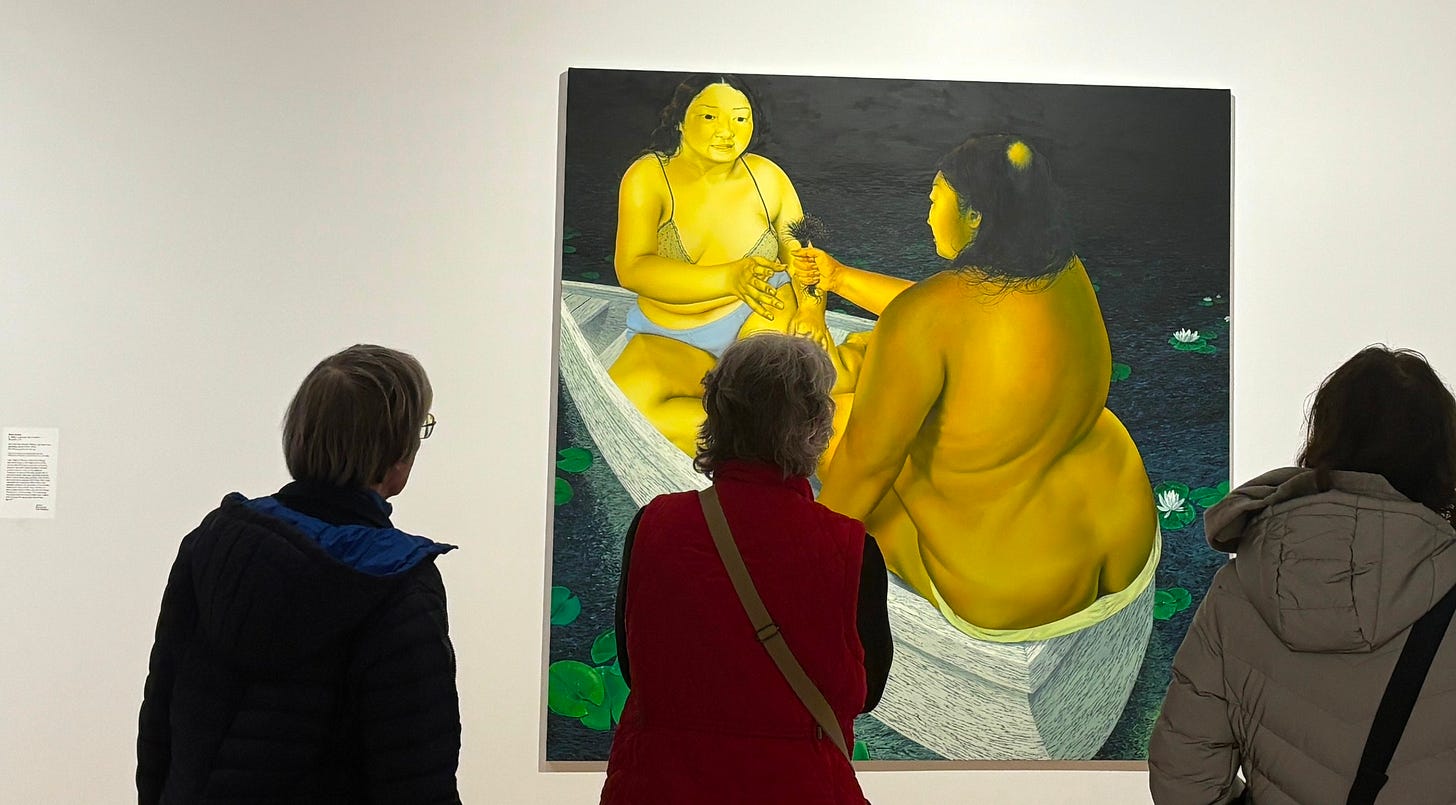
Yet still, gender inequity in the art world for both arts workers and artists themselves still pervades. A 2022 Burns Halperin report discovered that only 11% of acquisitions at 31 prominent US museums between 2008 and 2020 were works by women artists; 0.5% were by African American women artists.
A Brief History of Exhibiting Work by Women Artists: Educational Barriers & Denied Access
Highlighting the achievements of women artists — dead and living — in the art world has almost always been a lower priority, with multiple odds stacked against them that men simply don’t face.
The reason for this inequity is a combination of lasting gender biases, historic lack of art education access for women, and subjugation of women artists to ‘soft’ mediums like smaller paintings, drawings, and ceramics.
If you don’t believe me, just think about how women had to wait decades (perhaps longer) to attend European art institutions like Paris’s École des Beaux-Arts, which was founded in 1648, untethered from ownership by the French government in 1863, and only started to admit female students in 1897. Most women artists in France in the 19th century weren’t able to exhibit their works in the Salon system, so they had to form their own organizations or seek outside help.
I should note that access to art education for women in the United States had slightly fewer barriers, with the National Academy of Design offering limited mixed-gender classes by 1846. The New York School of Design for Women was established to bridge the gap in 1852.
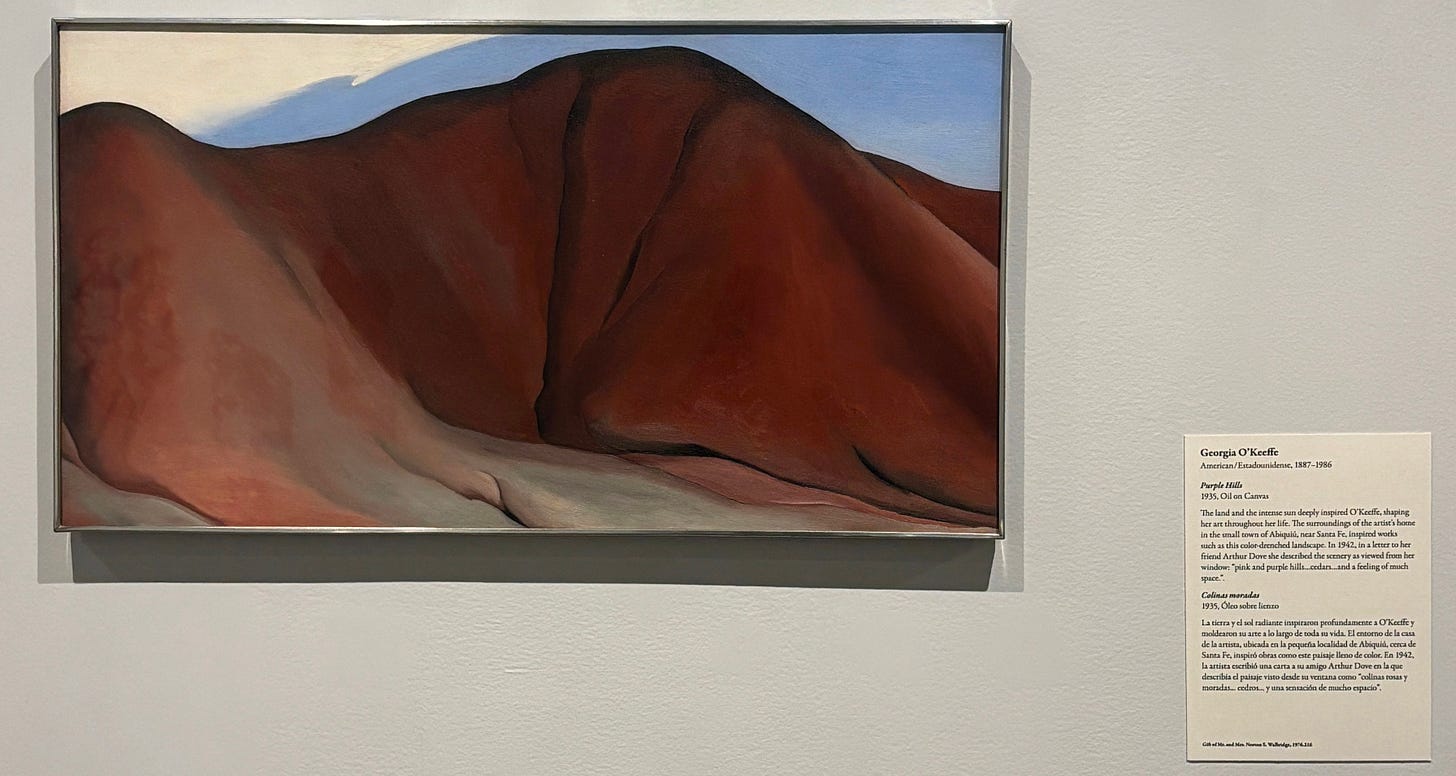
Getting an art education wasn’t friendly to women, yet alternatives including private education, were available. Exhibiting work at major art institutions proved much harder to accomplish. In 1929, MoMA opened its doors to the public with ‘Cezanne, Gauguin, Seurat, Van Gogh,’ a show that featured paintings by these European male artists whose work had rarely been shown in New York. Following this first exhibition were a series of group and solo shows of works by male artists and architects; Matisse, Rivera, Le Corbusier,and Dalí are just a few of those names.
It wasn’t until 17 years later in 1946 that a woman artist was awarded a solo show at MoMa. The woman was Georgia O’Keeffe who, at that point, had been a renowned American painter since the mid-1920s.
Recent Strides for Female Artists
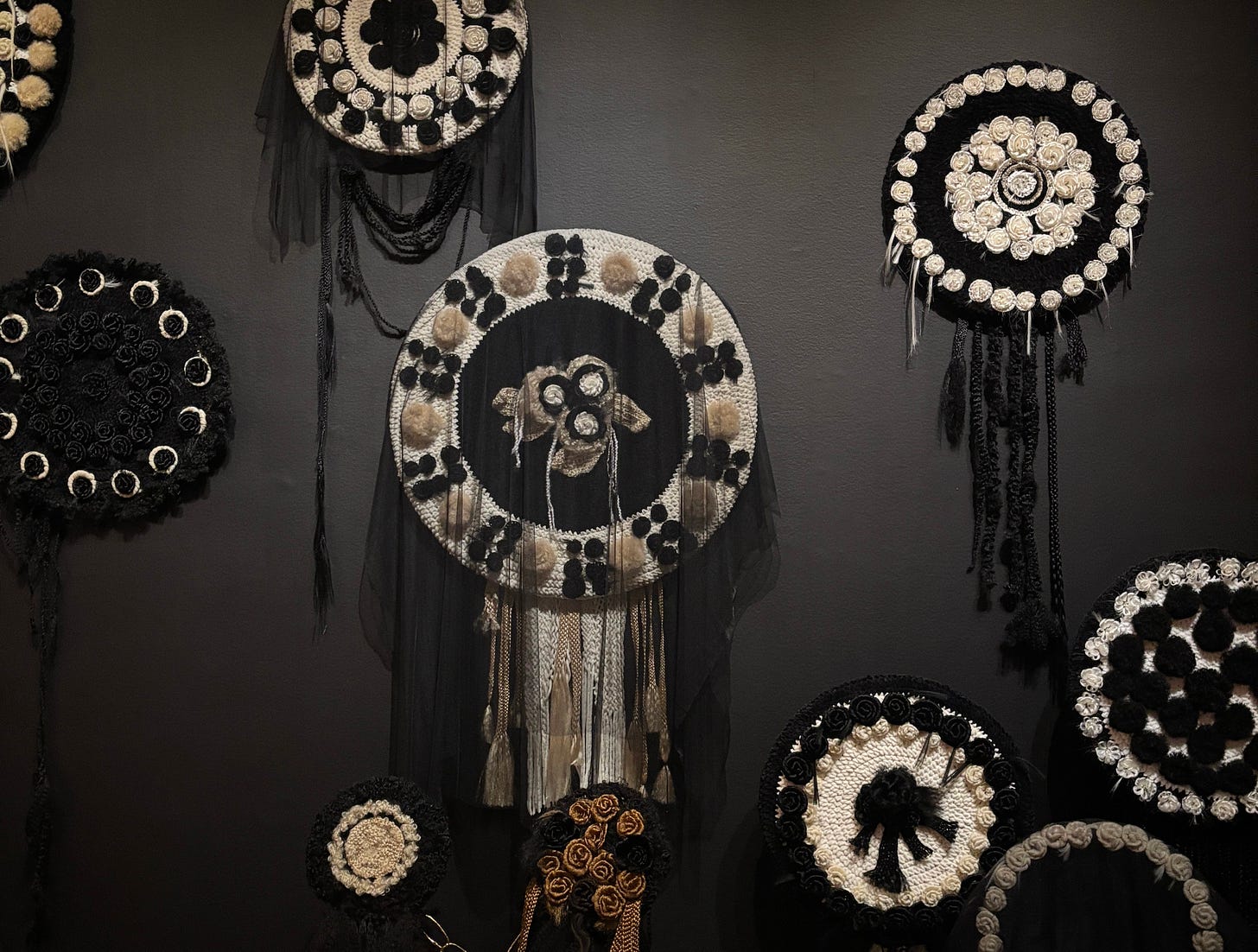
Now, some better news about opportunities for female artists. If these dates feel all too recent for such accomplishments for women, it’s because they are:
2014: Georgia O’Keeffe’s “Jimson Weed/White Flower No.1” (1932) is sold for $44.4 million, the highest price ever paid for a work by a female artist. This number doesn’t compare to the 106.5 million-dollar price tag of a Picasso portrait sold in 2010, but it’s still a hefty sum.
2016: The national museum of Spain, Museo del Prado, hosts its first solo exhibition of a woman artist’s works. After 200 years of only granting male artists retrospectives, painter Clara Peeters’s paintings were exhibited in a dedicated show.
2019: Gender Parity is finally achieved among artists exhibited at the Venice Biennale, with 53% women artists. The Biennale was established back in 1895.
2021: The Joan Mitchell Fellowship is established, granting $60,000 to living artists with an emphasis on awarding women artists, LGBTQIA+ artists, artists with disabilities, artists of color, and other marginalized creatives.
2024: Collector Christian Levett opens a private museum in the South of France, exhibiting works by 90 women artists with no male artists represented. In 2017, he decided to only buy works by women artists.
2025: Marlene Dumas sets a record for the most expensive artwork sold by a living woman artist with a 13.63 million-dollar sale.
Why should I care about living women artists?
Living artists keep the art world in motion. Through their unique creative expressions, they hold the power to help us make sense of the world today, something I think we need now more than ever. As you’ve read in this piece, female perspectives are still so underrepresented at auction, in museum collections, and other areas of the art world.
As I’ve engaged with more living artists over the years while studying art history in college and working in the arts, my perspective has widened, and so has my knowledge of living women artists. At the same time, I’ve learned about far too many spectacular women artists who are no longer alive – Pacita Abad, Ruth Asawa, Ithell Colquhoun, Alma Thomas, Vivian Browne – and just now getting their due.
To prevent the trend of women artists gaining posthumous recognition, we must uplift those who are living. For colleges and institutions, this can look like inviting living women artists to give lectures and speak on panels to inspire the next generation of women artists.
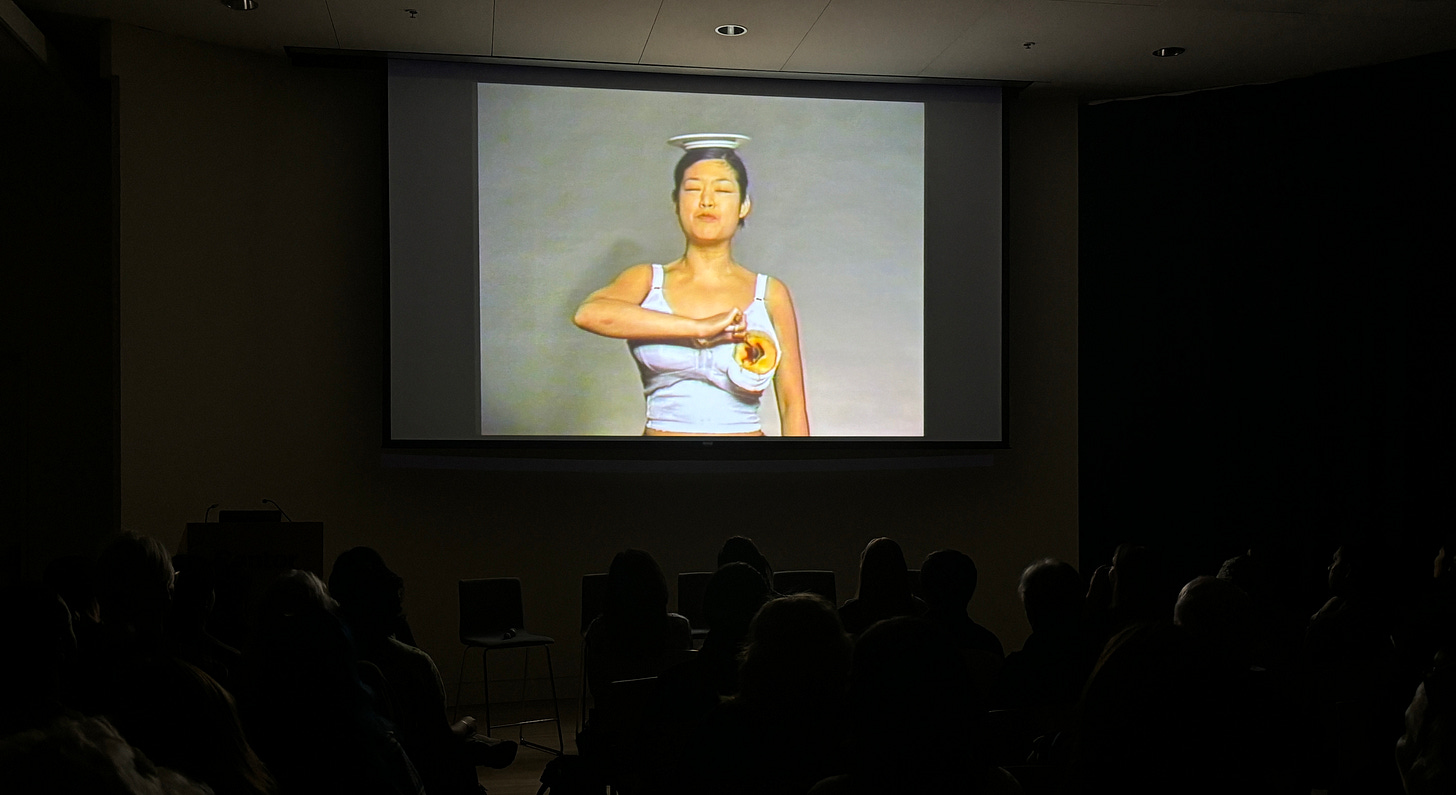
Exhibiting, commissioning, selling, and buying more work by living women artists is the only way to stop this trend in its tracks and attempt to close the gender pay gap in the arts (this 2024 article gives some recent stats about female artists still lagging behind male artists). If living women artists cannot make enough money to sustain their art careers and create new work, opportunities for their work to show up on the walls of museums, galleries, and homes shrink drastically.
How do I support living women artists if I can’t buy their art?
I think about this a lot as a museum employee and a 23-year-old who is in no place to be buying art right now.
For me, platforming living women artists on my Substack was the answer. My series of notes that features more than 60 women artists has amassed around 150,000 views and tens of thousands of likes. I never expected this series to go viral, and it wasn’t my intention. Even sharing a work you love by a living artist on your social media can gain a handful of new fans of their work. And visibility like that in our time makes a huge difference when social media popularity can get artists into the spaces they want to enter.
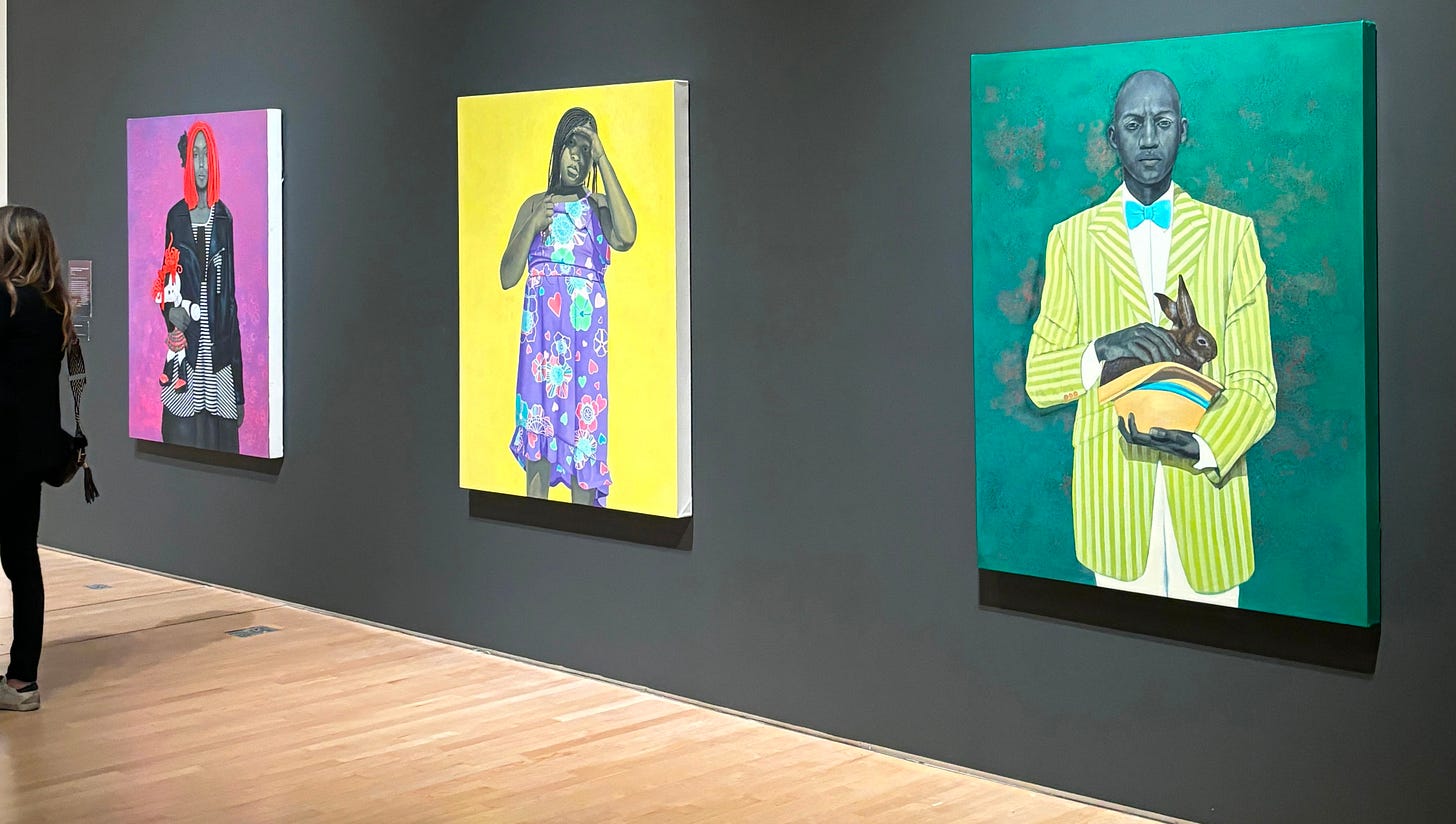
Perhaps make a bigger effort to attend gallery and museum shows exhibiting works by women artists! For the most part, gallery shows are a free way to see really spectacular contemporary art by living artists. Most major museums are hosting retrospectives of art made by women, some of which I’ve seen this year in the Bay Area.
Here’s some shows in the States to check out featuring several women artists I’ve written about in my Substack Notes series. Shows marked with an * feature living artists:
West Coast
*‘Christina Kimeze’ - Hauser & Wirth Gallery, Los Angeles (opens June 28)
‘Built on the Backs of Women’ - Col Gallery, San Francisco (ends July 6)
*‘Lauren Greenfield: Social Studies’ - Fahey/Klein Gallery, Los Angeles (ends July 5)
*‘Margo Wolowiec,’ ‘Andrea Bowers’ - Jessica Silverman Gallery, San Francisco (ends July 19)
*‘Suchitra Mattai: she walked in reverse and found their songs’ - Seattle Asian Art Museum (ends July 20)
Ruth Asawa Retrospective - SFMoMA (ends Sep. 2)
*’Spotlight: Ann Craven’ - Portland Museum of Art (ends Sep 14)
East Coast
*‘Zoé Blue M.: Hard Boiled’ - Jeffrey Deitch Gallery, New York (ends June 28)
*‘Rosa Barba: The Ocean of One’s Pause’ - MoMA, New York (ends July 6)
*‘Alicja Kwade: Telos Tales’ - Pace Gallery, New York (ends Aug 15)
*‘Amy Sherald: American Sublime’ - Whitney Museum of American Art, New York (ends Aug 10)
*‘Sara Cwynar’ - ICA Boston (ends Sep 7)
‘Hilma af Klint: What Stands Behind the Flowers’ - MoMA (ends Sep 27)
Visit the entirety of the National Museum of Women In The Arts! Some shows they have right now include artists such as the Guerrilla Girls and Niki de Saint Phalle.
‘Emily Cole: Ceramics, Flora & Contemporary Responses’ - Thomas Cole Historic Site (ends Nov 2)
Mid West
‘Frida Kahlo’s Month in Paris; A Friendship with Mary Reynolds’ - Art Institute Chicago (ends July 13)
‘Rachel Ruysch: Nature into Art’ - Toledo Museum, Toledo (ends July 27)
*Kandis Williams: A Surface’ - Walker Art Center, Minneapolis (ends Aug 24)
*‘Lucía Vidales: Hambre’ - Kemper Museum of Contemporary Art (ends Sept 7)
*‘Pipilotti Rist: Supersubjektiv’ - MCA Chicago (ends Sep 14)
*UPCOMING but put on your calendar: Haegue Yang and Teresa Baker will both have exhibitions at the Contemporary Art Museum - St. Louis (opens Sep 5)

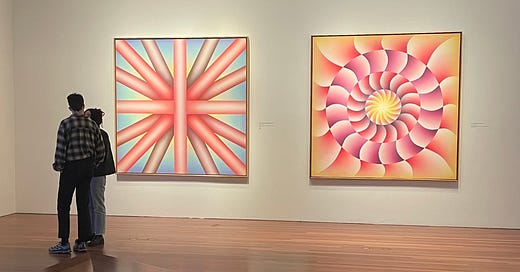


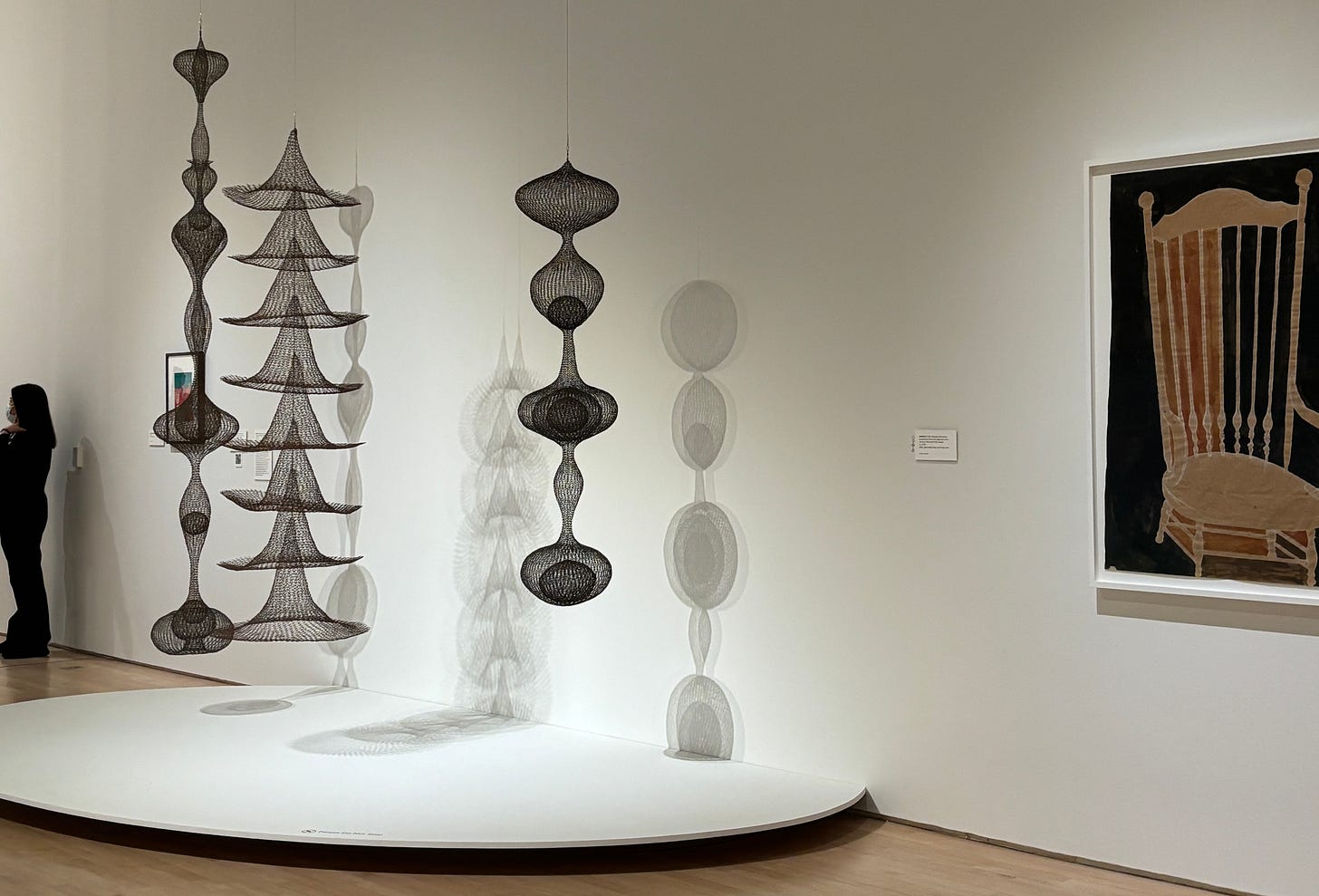
i love your notes about living women artists, i've discovered so many (new to me) works through them! also the ruth asawa retrospective looks incredible, wish i could go!
“We are Each Other” by Sonya Clark at the High Museum in Atlanta is by far my favorite exhibit I’ve seen at the High!